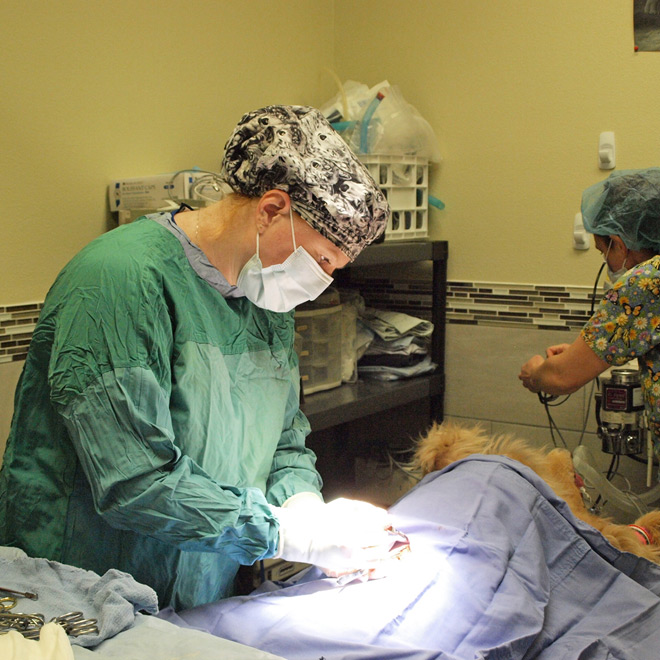Elective or Emergency C-section
 Sometimes, natural whelping cannot be achieved in the dam. There are literally dozens- maybe hundreds- of reasons that a c-section is the best option to bring your new puppies into the world. We won’t discuss all of the reasons here, but we’ll cover some of the top reasons- and try to discuss why the timing is the most important factor.
Sometimes, natural whelping cannot be achieved in the dam. There are literally dozens- maybe hundreds- of reasons that a c-section is the best option to bring your new puppies into the world. We won’t discuss all of the reasons here, but we’ll cover some of the top reasons- and try to discuss why the timing is the most important factor.
During the dam’s pregnancy, we will want to understand the presence of several risks, ranging from puppy size, position, previous history of complications or dystocia. We don’t prefer to do c-sections. If there are enough risk factors, we will certainly recommend it and calculate the day and time to perform it.
Dogs are only pregnant for 63 days, and there is only a 4 day window when puppies are viable- and it’s tied to the dam’s ovulation date, not the breeding date. Puppies are not like human babies. Human babies can be born weeks or months premature- and with proper medical care and attention- the baby will survive. Puppies will not likely survive if they’re born outside of 61-65 days.
Before day 61, the puppy has not developed their lungs fully. If a c-section is done prematurely, the pups will likely not be able to breathe and they will perish. On the other side of the scale, at day 65 or 66, the placenta will likely fail. The placenta is biologically programmed to exist for 63 days. Beyond this time, when the placenta fails, it will no longer provide blood flow and the puppies will not get the oxygen or nutrients to be viable.
This is why timing is critical when scheduling a c-section, and knowing your important dates. Not just the breeding date, but the ovulation date. As your partner in breeding your prized dog, Highland Pet Hospital will have a hyper-accurate history of all of the critical milestones, and we can discuss if and when a c-section may be necessary. This is not a decision we take lightly. Scheduling too early or too late puts both the mother and the litter at risk.


 Tap to Call Now
Tap to Call Now